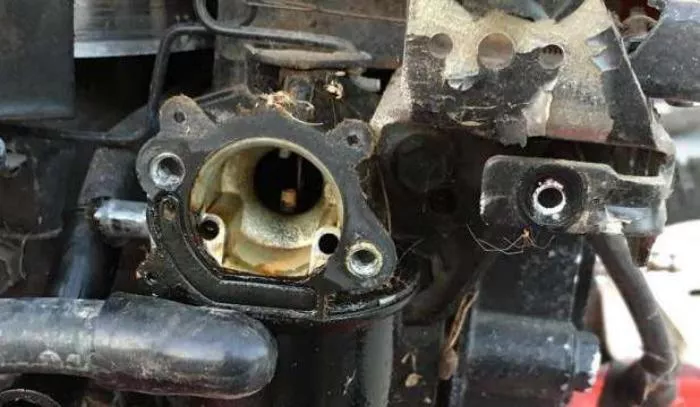A clogged carburetor is one of the most common issues that can prevent a lawn mower from running smoothly. When the carburetor gets blocked, fuel cannot flow properly, leading to poor engine performance or a complete failure to start. Fortunately, cleaning or fixing a clogged carburetor is a task that most homeowners can handle with the right tools and knowledge. This guide will walk you through the process step by step, ensuring your lawn mower runs like new again.
Understanding the Carburetor and Its Role
The carburetor is a crucial component of a lawn mower’s engine. Its main job is to mix air and fuel in the right proportions before delivering it to the combustion chamber. When the carburetor is clogged, this balance is disrupted, causing problems such as:
Engine stalling: The mower may start but then shut off unexpectedly.
Hard starting: The engine struggles to turn over or refuses to start.
Rough idling: The mower shakes or runs unevenly at low speeds.
Black smoke: Excess fuel burns inefficiently, producing dark exhaust.
Understanding these symptoms helps diagnose a clogged carburetor before moving on to repairs.
Tools and Materials Needed
Before starting the repair, gather the necessary tools and materials. Having everything ready will make the process smoother.
Basic tools: Screwdrivers, pliers, and a socket wrench set.
Cleaning supplies: Carburetor cleaner, compressed air, and a small brush.
Safety gear: Gloves and safety glasses to protect yourself.
Replacement parts: Gaskets or a carburetor rebuild kit if needed.
Step-by-Step Guide to Fixing a Clogged Carburetor
Disconnect the Spark Plug
Safety should always come first. Before working on the carburetor, disconnect the spark plug wire to prevent accidental engine starts. This ensures the mower won’t turn on while you’re handling its components.
Remove the Air Filter and Housing
The air filter housing sits on top of the carburetor. Unscrew or unclip it to access the carburetor underneath. Remove the air filter and inspect it for dirt or damage. A dirty air filter can contribute to carburetor clogs, so clean or replace it if necessary.
Detach the Fuel Line
Locate the fuel line connected to the carburetor. Use pliers to loosen the clamp and carefully pull the hose off. Be prepared for some fuel spillage, so have a container or rag handy to catch any drips.
Remove the Carburetor
The carburetor is usually held in place by bolts or screws. Carefully remove these fasteners and gently pull the carburetor away from the engine. Some models may have linkages or throttle cables attached, so take note of their positions before disconnecting them.
Disassemble the Carburetor
Once the carburetor is removed, take it apart carefully. Most carburetors have a bowl at the bottom that collects debris. Unscrew the bowl and inspect it for dirt, old fuel, or varnish buildup. Remove the float, needle valve, and jets, as these are common areas where clogs occur.
Clean the Carburetor Components
Spray carburetor cleaner on all parts, paying special attention to small passages and jets. Use a small brush or compressed air to remove stubborn debris. Avoid using wire or sharp objects that could damage delicate components.
Inspect and Replace Worn Parts
Check the gaskets, O-rings, and float for wear or damage. If any parts are cracked or deteriorated, replace them with new ones from a rebuild kit. Reusing damaged parts can lead to future problems.
Reassemble and Reinstall the Carburetor
After cleaning, reassemble the carburetor in the reverse order of disassembly. Ensure all components fit snugly and securely. Reattach the carburetor to the engine, reconnect the fuel line, and replace the air filter housing.
Test the Lawn Mower
Reconnect the spark plug wire and start the mower. Let it run for a few minutes to ensure smooth operation. If the engine still struggles, double-check for any missed clogs or improper reassembly.
Preventing Future Carburetor Clogs
Regular maintenance can help avoid carburetor issues in the future. Follow these tips to keep your lawn mower running efficiently:
Use fresh fuel: Stale gasoline can leave deposits that clog the carburetor.
Add a fuel stabilizer: This prevents fuel degradation during storage.
Clean the air filter regularly: A dirty filter allows debris into the carburetor.
Store the mower properly: Drain the fuel or run the engine dry before long-term storage.
When to Seek Professional Help
While many carburetor issues can be fixed at home, some situations may require professional assistance. If the carburetor is severely damaged or cleaning doesn’t resolve the problem, a small engine repair shop can provide a more thorough inspection and repair.
Conclusion
Fixing a clogged carburetor on a lawn mower is a straightforward process that can save you time and money. By carefully cleaning and inspecting each component, you can restore smooth engine performance and prevent future issues. Regular maintenance, such as using fresh fuel and keeping the air filter clean, will help avoid clogs in the long run. If problems persist, consulting a professional ensures your mower stays in top condition. With these steps, your lawn mower will run efficiently, keeping your yard looking its best.
Related topics:
- 4 BEST SELF PROPELLED LAWN MOWER WITH MULCHER
- HOW TO FIX A PRIMER BUTTON ON A LAWN MOWER
- HOW TO REPAIR A PUSH LAWN MOWER

